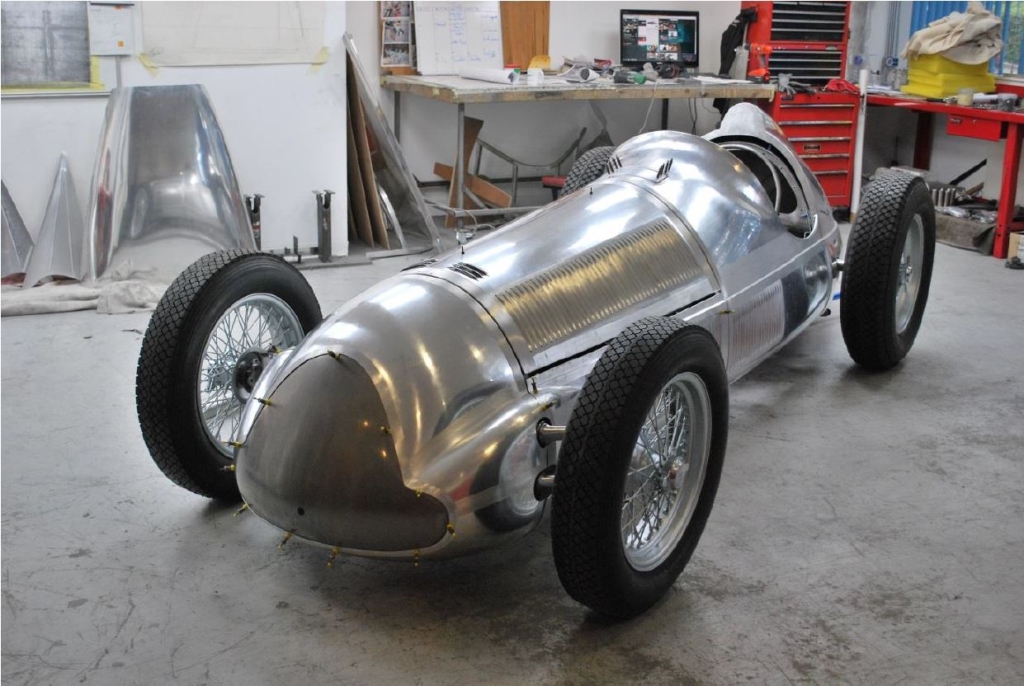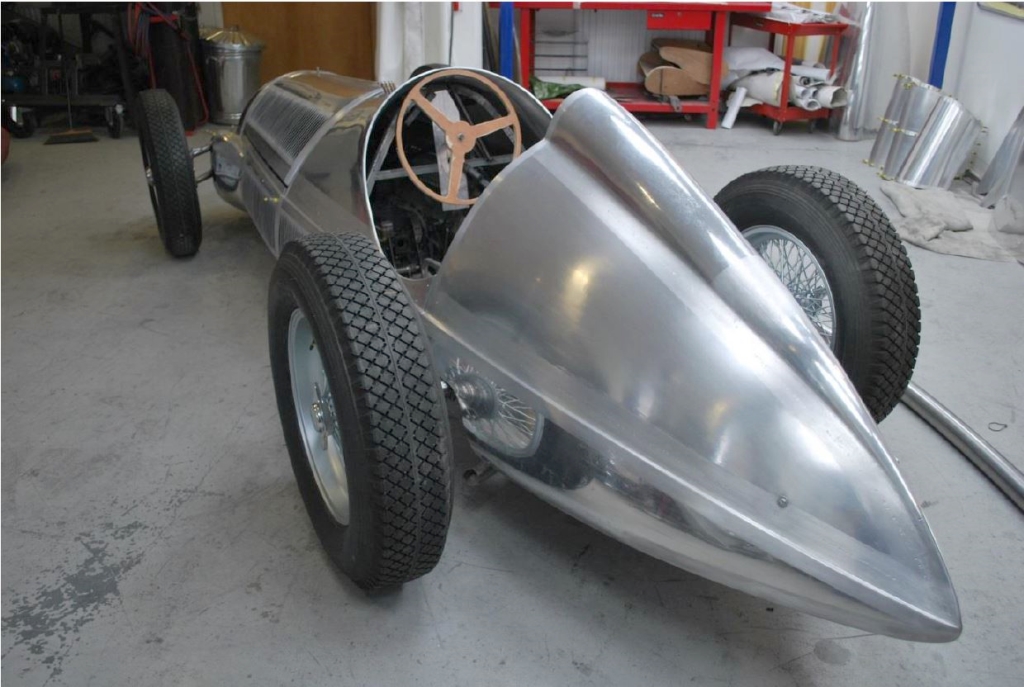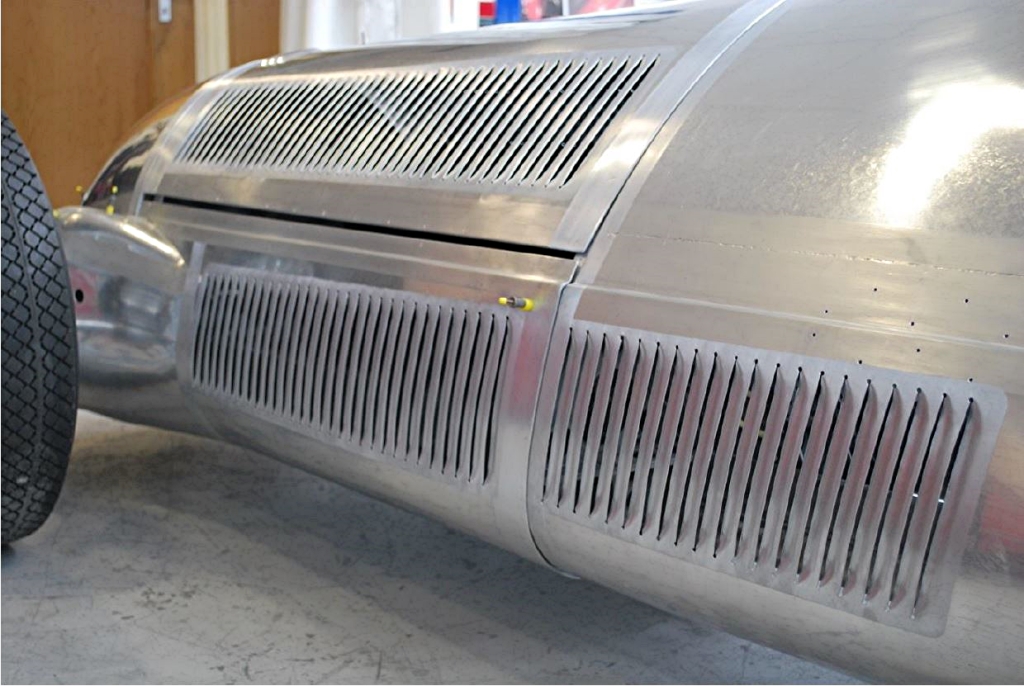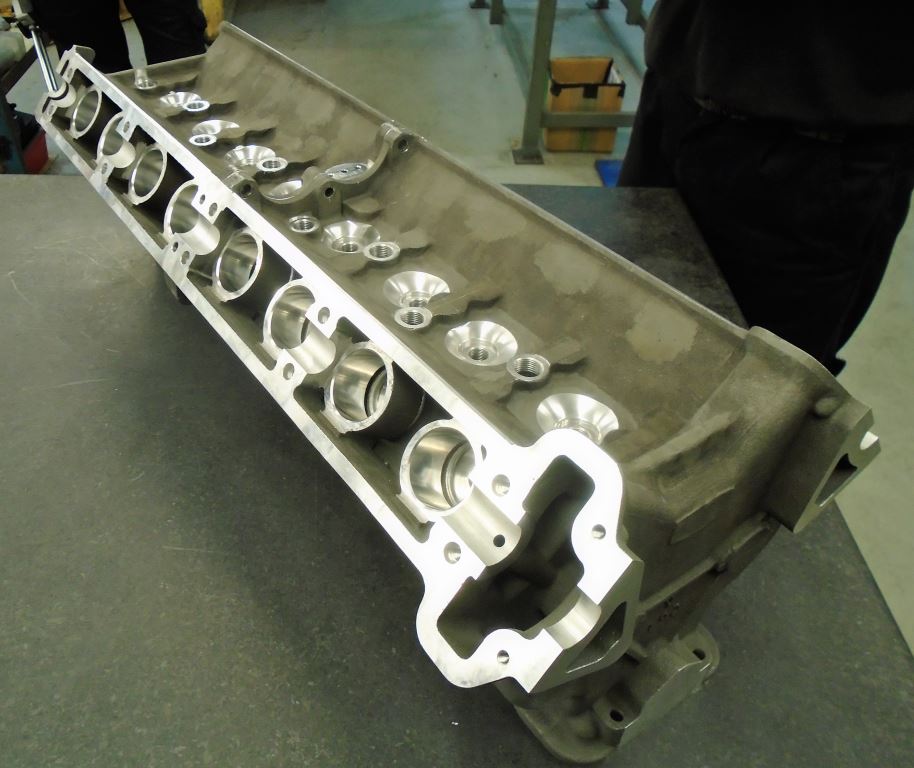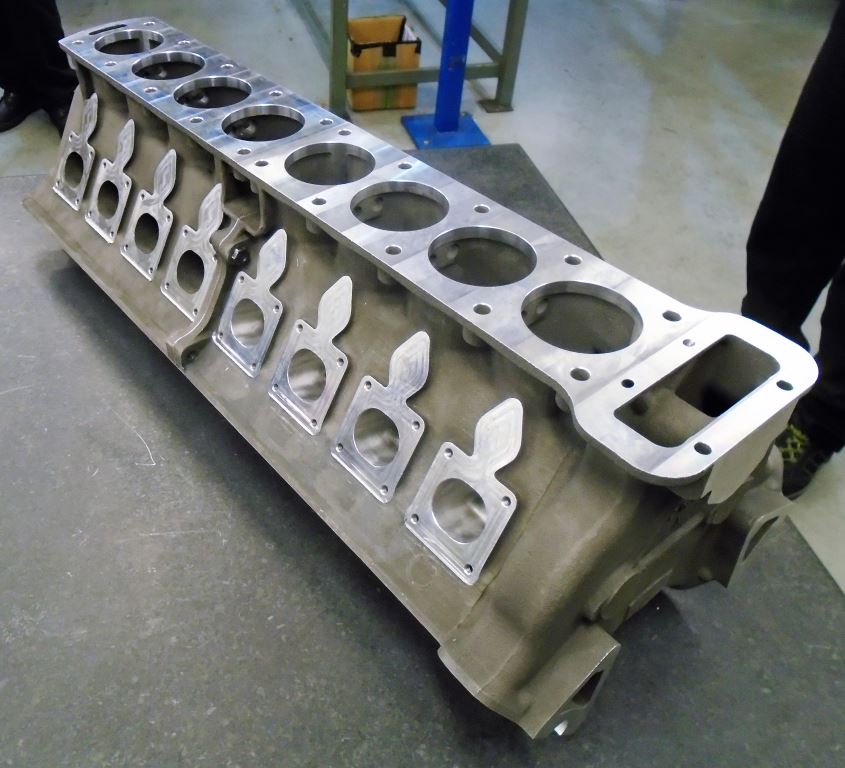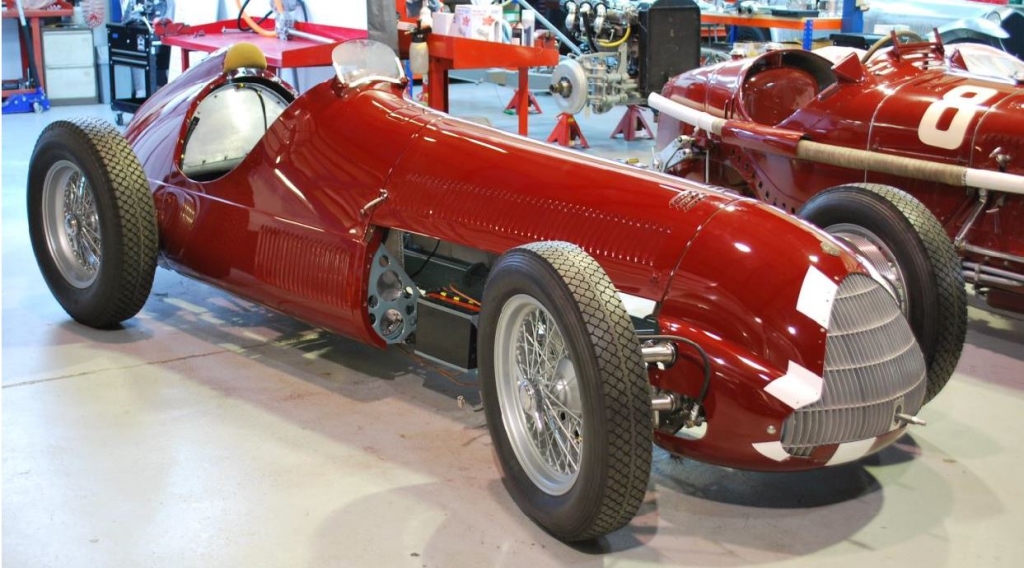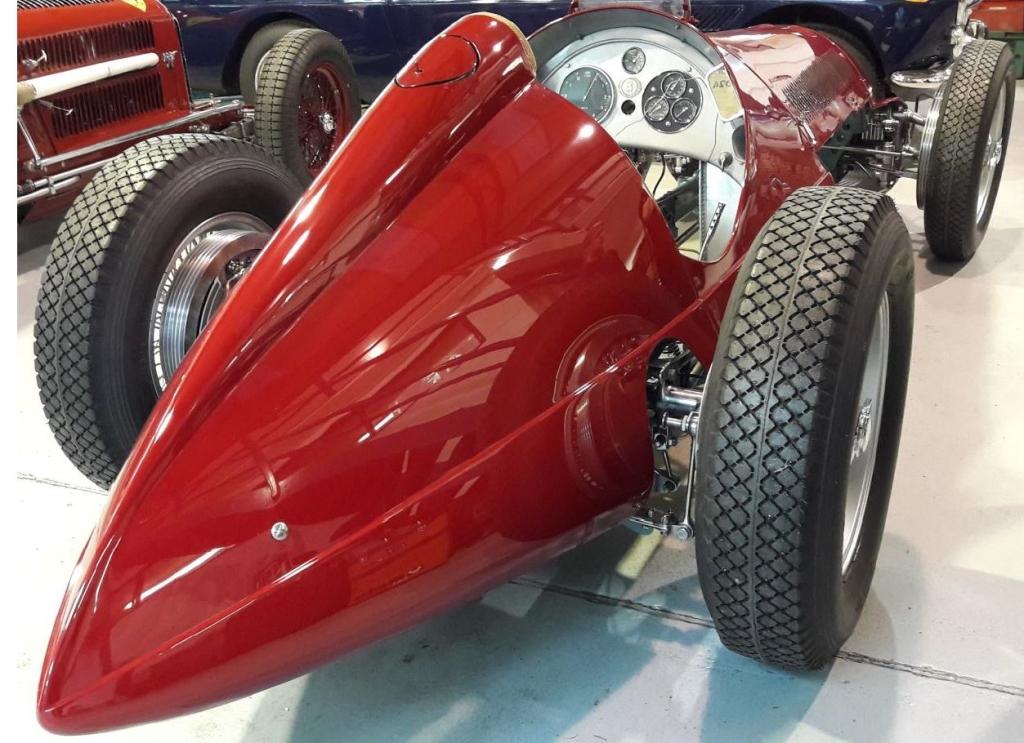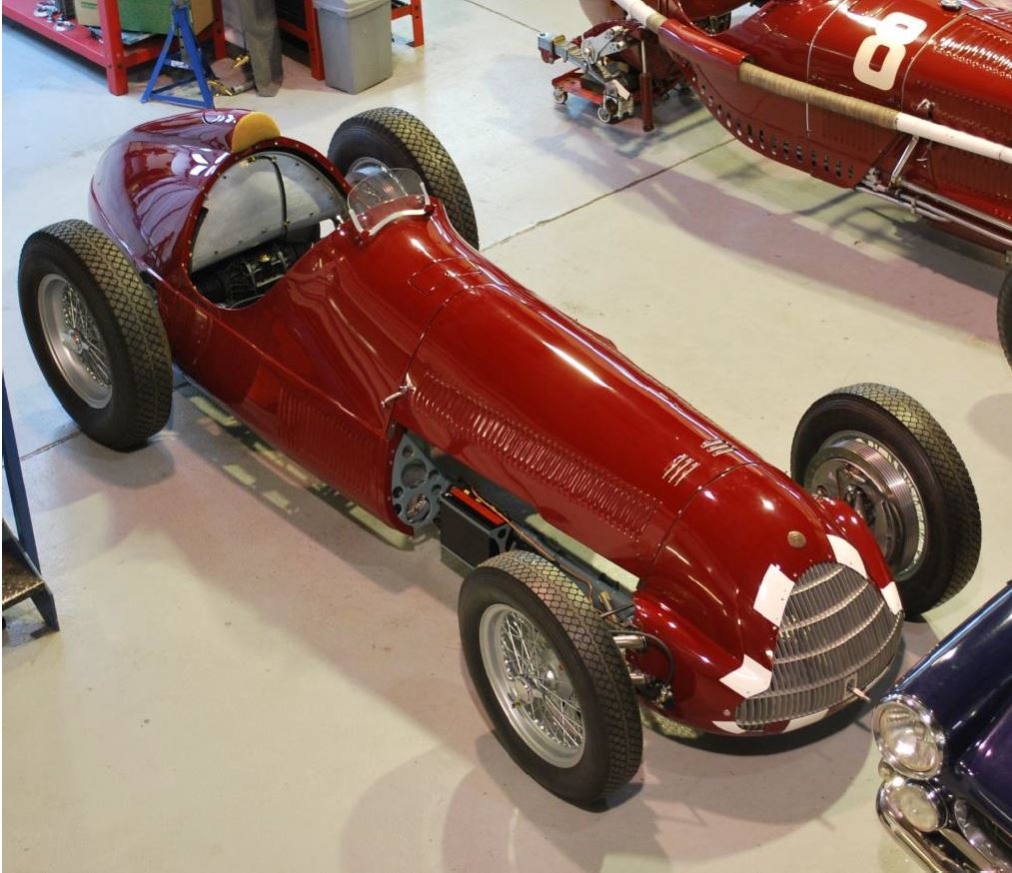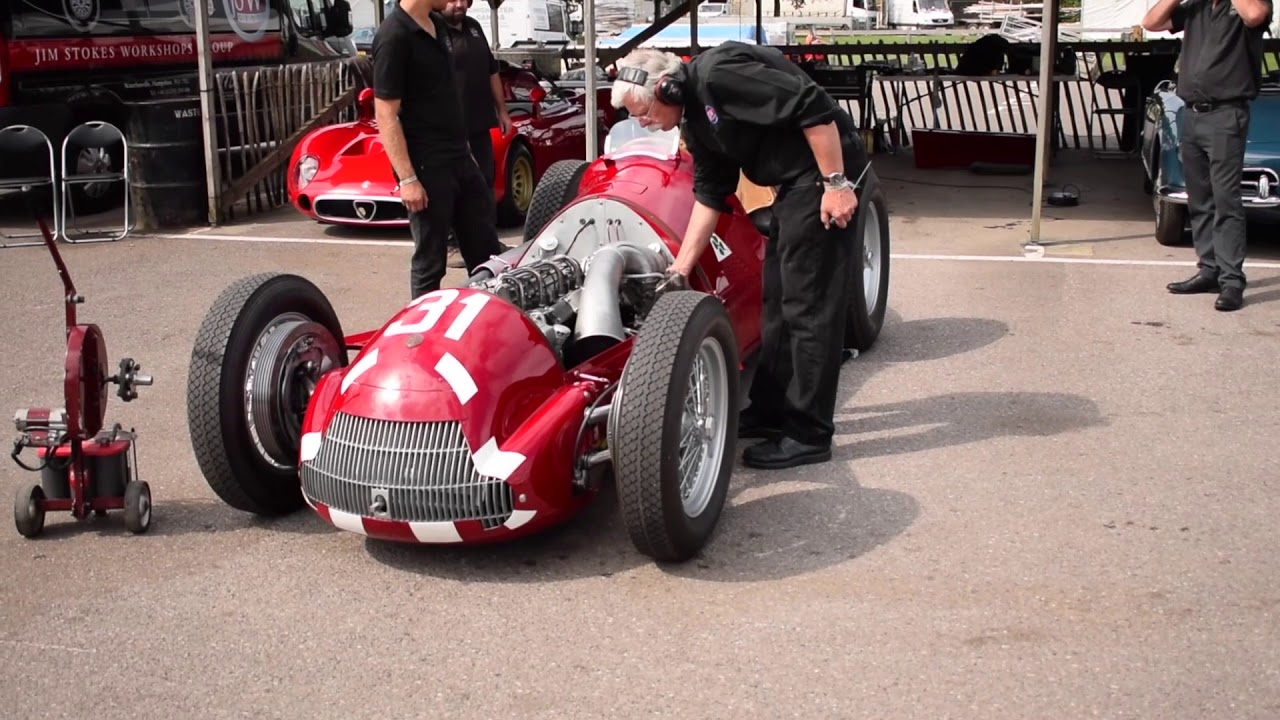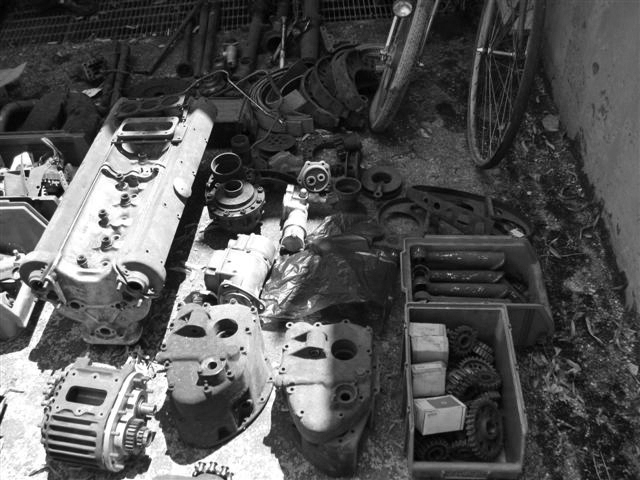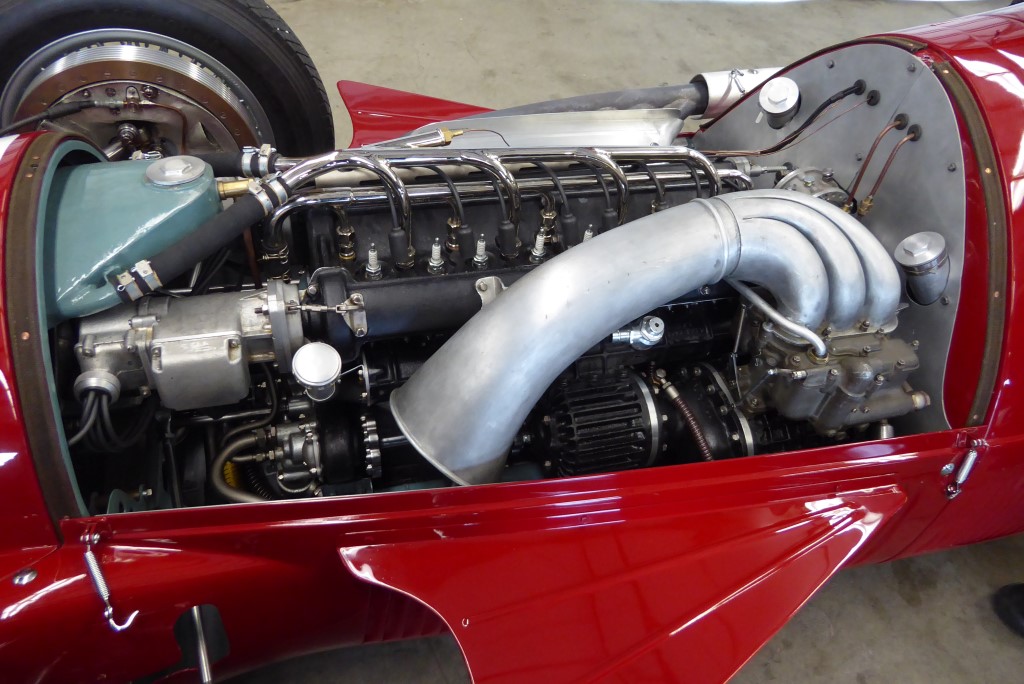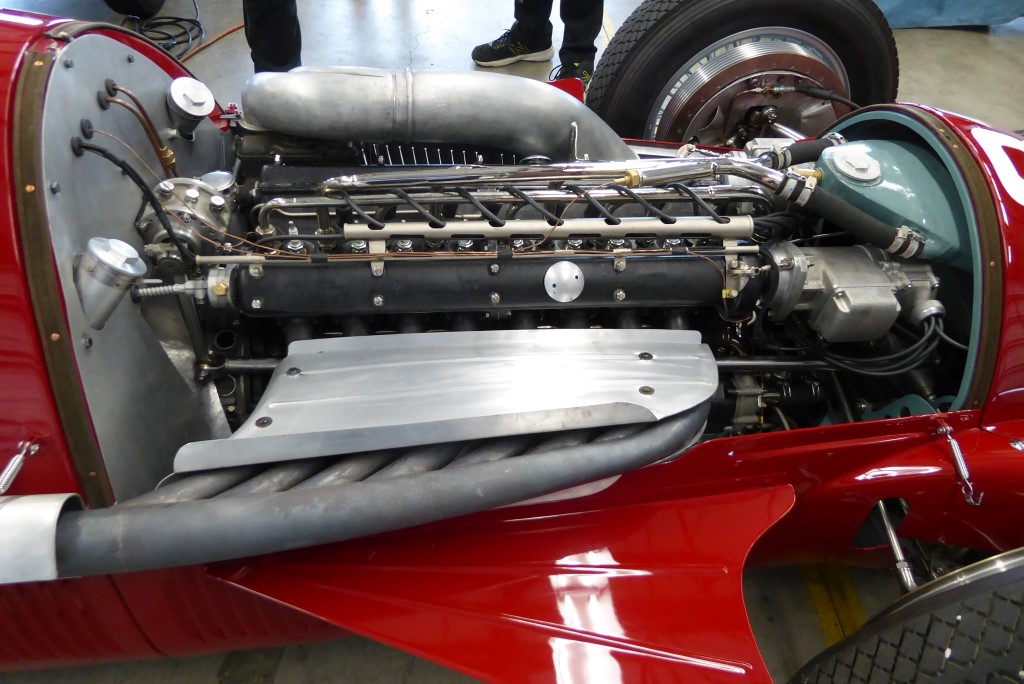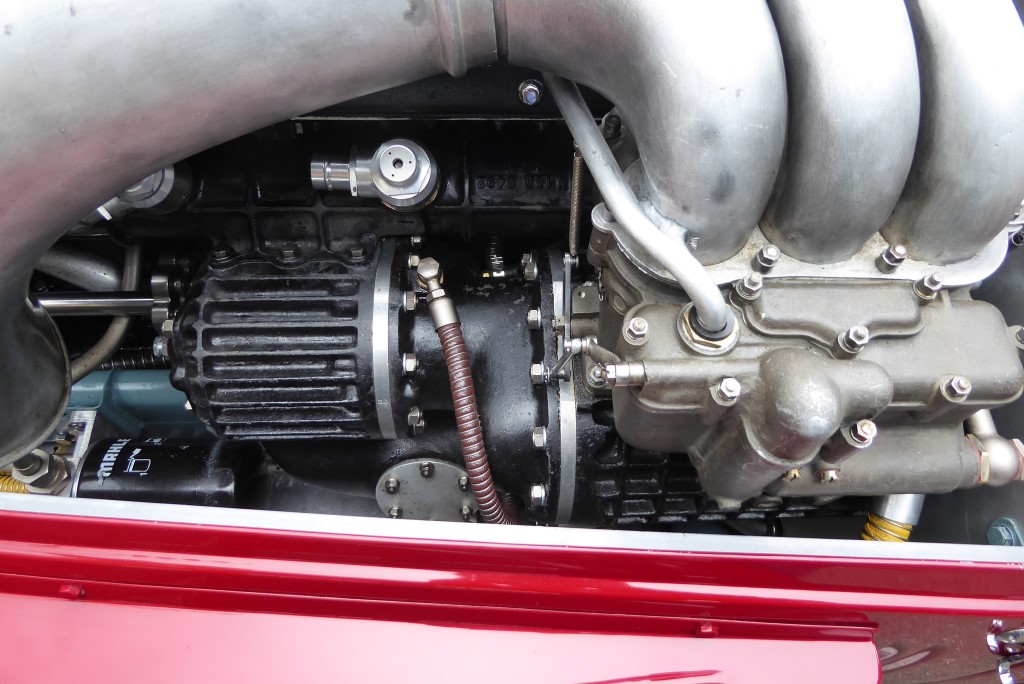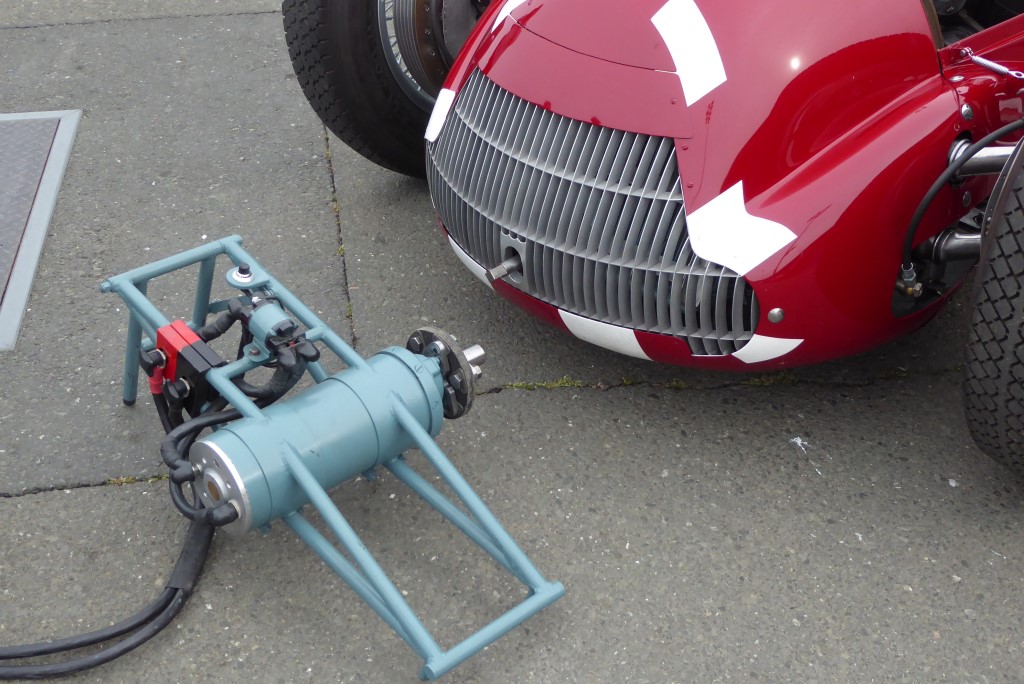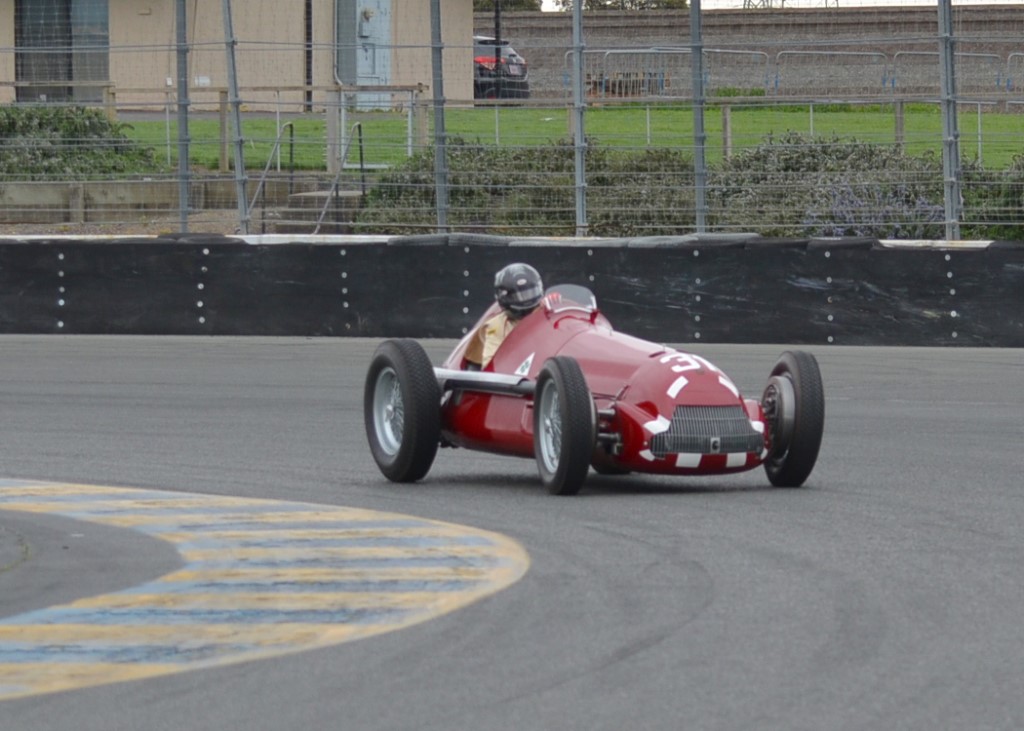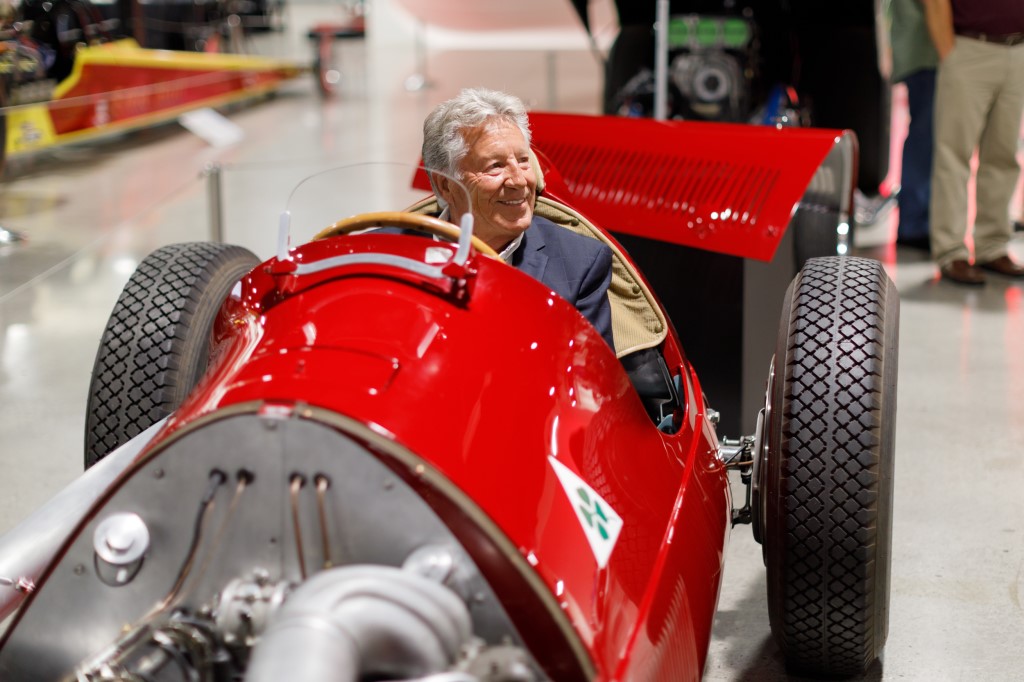Peter Giddings Racing
1947 Alfa Romeo 158DThe Alfa Romeo 158 (commonly called "Alfetta" or little Alfa) is one of the most successful Grand Prix race cars ever produced. It was originally developed for the 1937 voiturette formula which limited displacement to 1.5 liters. In the late 1930s, Alfa Romeo had not been competitive with the German Grand Prix teams of Mercedes and Auto Union so Enzo Ferrari made the decision to compete in the voiturette class. The result was the Alfa 158, designed by Goiacchino Colombo in Milan but built in the Scuderia Ferrari headquarters in Modena. The car's name is supposed to have come from the 1.5 liter engine with eight cylinders. The engine displacement was 1479 cc with 58 mm bore and 70 mm stroke and a single-stage Roots supercharger which gave about 17 psi of boost. The engines were very light, with the crankcase and sump being cast in Elektron, a magnesium alloy. The block and head are an aluminum alloy monobloc casting to avoid gasket problems. It has thin-wall steel screw-in wet cylinders and steel valve-seat inserts. The two overhead camshafts are driven by a spur gear train at the front of the engine. Two valves per cylinder are inclined at 100 degrees. The crankshaft is chrome-nickel steel billet and runs in nine lead-bronze main bearings. Ignition is by twin Marelli magnetos. The cars had a tubular frame and the trailing arm front suspension had a transverse leaf spring with hydraulic dampers. The rear suspension was a swing axle with transverse leaf spring and both hydraulic and friction dampers. The wheelbase was 98 inches with a track of about 49 inches. The dry weight of the car was 1564 pounds. Soon after the construction of the first cars was completed, Alfa and Enzo Ferrari parted ways and the four cars constructed were returned to Milan where the cars were debuted by Alfa Corse in the Coppo Ciano in 1938 where they finished first and second. The cars at this time had a narrow body and produced 190 bhp at 6,500 rpm. Alfa Romeo began 1939 by producing an additional four 158s (now referred to as 158B). These new models featured an updated lubrication system as well as larger supercharger rotors. With these upgrades, the cars now produced 225 horsepower at 7,500 RPM. These cars had wider bodywork and larger radiator cowl and single exhaust higher on the body offside. When World War II began, racing stopped and the Alfa 158s were hidden away until 1946. When racing resumed in 1946, Alfa brought out the 158C, the first of the two-stage supercharged cars. They produced some 260 bhp at 7,500 rpm and featured twin exhaust, and a forward-facing under-bonnet air-induction trunk to feed the two-stage blowers which now produced over 20 psi. The Alfa 158D was developed in 1947 and is also known as Alfa 158/47. This car featured a larger primary blower and single exhaust pipe with the carburetor intake extended to the front spring. The additional boost from the larger supercharger resulted in an engine that now produced 350 bhp at 8,500 rpm. The car also had lowered front and rear springs for improved handling and new, very attractive low-nose bodywork. In 1950, the first season of 'modern' Formula One racing, with drivers Giuseppe Farina and Juan Manuel Fangio, the Alfa 158 was victorious in all eleven races it entered. Farina won the World Championship for Drivers that year. The final version of the Alfetta was the 159, with de Dion rear axle, larger superchargers, twin exhausts, larger diameter and width brake drums and carburetor air intake via a scuttle scoop. This final version of an engine that was designed in 1937 now produced some 420 bhp at 9,500 rpm, with occasional bursts to 10,500 rpm. The connecting rod big ends now had needle roller bearings. The two-stage superchargers finally developed a boost of approximately 45 psi. The penalty was that the rich fuel mixture that was required to produce this power came at the expense of fuel mileage, getting about 1.5 miles to the gallon on the Shell Dynamin fuel which was 98.5 % methanol, 1% castor oil, and 0.05 % water. With a weight of only about 1600 lbs, the top speed exceeded 300 kph or about 190 mph. Fangio won the first of his World Championships in 1951 in the Alfetta. When Alfa retired from Grand Prix racing at the end of 1951, the Alfa 158/159 had won 47 of the 54 Grands Prix in which they had entered. The Alfa 158 of Peter Giddings was reconstructed by Jim Stokes Workshops Ltd to the specifications of the Alfa 158D. This Alfa 158 was reconstructed from a large and comprehensive cache of original parts. Built over a four-year period, using a complete engine and transaxle unit with it's oil tank. Other original parts reused were the oil cooler, radiator, several superchargers, two carburetors, front and rear suspension parts, steering parts, many chassis components, brake components, and hydraulic and friction dampers. Any parts not found to be serviceable as well as chassis and body have been replaced by reproductions made from over 1200 original engineering drawings. In some cases, manufacture was carried out by the original suppliers to Alfa Romeo in period. The Alfa 158 is now being campaigned by Peter Greenfield in both North America and Europe. The following construction photos are courtesy of Jim Stokes Workshops.
The Alfa 158 body takes shape at Jim Stokes workshop.
The Alfa 158 shows its beautiful rear.
The many-louvered side view of the Alfa 158.
The monobloc cylinder head of the Alfa 158.
The monobloc cylinder head from the bottom. The steel cylinder liners are not yet installed.
The Alfa 158 takes final form.
Rear view of the Alfa 158.
Overall view of the almost complete Alfa 158.
Ready to fire up on Goodwood test day.
On the track and ready to go at Goodwood.
Some of the cache of original parts as found.
The Alfa 158 engine from the left side. Photo by Mike Sims.
The Alfa 158 engine from the right side. Photo by Mike Sims.
The Alfa 158 carburetor and the compound superchargers.
The external starter system for the Alfa 158.
Peter's Alfa Romeo 158 on the track at Sonoma, April 11, 2019, driven by Peter Greenfield. Mike Sims photo.
Mario Andretti sits in Peter's Alfa 158 at the World of Speed Museum where the Alfa is on display. Mario said that he had driven an Alfetta at the
|
